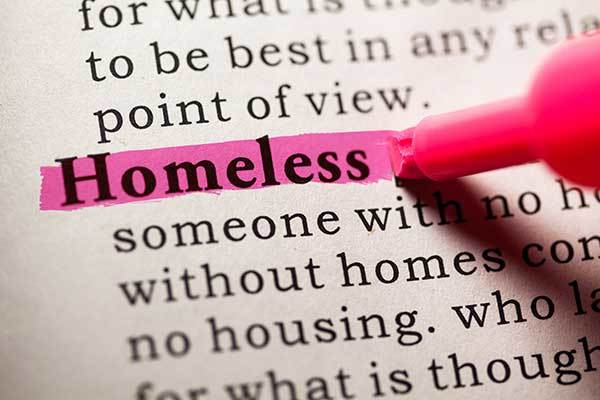You are viewing 1 of your 1 free articles
 Jules Birch
Jules BirchSolving homelessness will cost money but save much more in the long run
Crisis was set up 50 years ago and is still hard at work lobbying the government. Jules Birch examines its latest guide to ending homelessness
At times in the past year it’s seemed that all a politician has to do to end homelessness is say “Housing First” three times, take a trip to Finland and announce a new initiative.
All three do feature in the plan published by Crisis, but alongside a 10-year strategy that challenges the politicians to take a harder road to a real destination.
Everybody in: how to end homelessness in Great Britain was developed following an international evidence review of what works here and abroad, a consultation with more than 1,000 people across Britain and newly commissioned research to fill gaps in the evidence.
Crisis, which celebrates its 50th anniversary this year, warns that there are currently 160,000 people facing the worst forms of homelessness in Britain but that if we continue as we are this number will double over the next 25 years.
‘Ending homelessness’ in this context does not mean that nobody will lose their home again. It means that no one sleeps rough, everyone has a safe, stable place to live (and nobody is in emergency accommodation like a hostel without a plan to move them quickly into housing), and that where we can predict homelessness we can prevent it so that nobody is forced to leave their home or a state institution or prison with nowhere to go.
If all of that sounds expensive, PwC estimates the total cost of solving homelessness between 2018 and 2041 would be £19.3bn – but that it would deliver benefits of £53.9bn.
“PwC estimates the total cost of solving homelessness between 2018 and 2041 would be £19.3bn – but that it would deliver benefits of £53.9bn.”
Housing First is high up the list of recommendations and it should be made the default option for anyone homeless with complex needs, says the report.
That would be backed by wider reform of the homelessness legislation, including the abolition of priority need in England and Wales and a duty on Scottish councils to prevent homelessness.
Reforms should also ensure that lack of a local connection is not a barrier to getting help, robust monitoring of how key organisations support people facing homelessness and funding for local authorities to provide a mandatory set of prevention activities including support for people to keep their tenancies.
However, anyone who has heard conference presentations on what they did to prevent homelessness in Finland will know that that its pioneering Housing First approach was underpinned by serious investment in permanent housing.
Crisis says we need 100,500 homes for social rent each year for the next 15 years to meet the needs of homeless people and people on low incomes.
“Crisis says we need 100,500 homes for social rent each year for the next 15 years to meet the needs of homeless people and people on low incomes.”
Of those 91,000 are needed in England, 4,000 in Wales and 5,000 in Scotland – and that’s within overall provision of 383,000 new homes a year (343,000 in England).
That is on top of time-limiting the use of unsuitable temporary accommodation and funding of Critical Time Intervention, a housing-led approach that helps people who are vulnerable to homelessness during periods of transition.
But to back all of that up we also need housing benefit that truly covers the cost of housing, plus a new standard private tenancy in England and Wales with limits on annual rent increases plus specialist integrated employment and housing support for homeless people.
The report comes with some impressive UK and international endorsements – for example, Juha Kaakinen of Finland’s Y-Foundation says it could have the same revolutionary impact as the Beveridge report – and includes a wealth of case studies that put a human face on the problems it diagnoses.
But it is also a detailed plan with far more detail than I can go into here about definitions of ‘homelessness’ and what ‘ending’ it means, tackling rough sleeping and improving the welfare safety net and how prevention, rapid rehousing and Housing First can work.
Each has practical examples and recommendations for what needs to change in England, Scotland and Wales.
Amid all this positivity, perhaps the cynicism in my introduction was a bit overdone.
After all, the homelessness legislation has been improved recently in England, Scotland and Wales, and there are tentative signs of a virtuous circle of learning across the different nations (with England borrowing from the Welsh approach to prevention and a live debate in Wales right now about Scotland’s abolition of priority need).
However, the plan is nothing if not ambitious and that applies even to the legislative framework.
It measures the current English, Welsh and Scottish approaches against 10 different criteria for a ‘perfect homeless system’ and there are only two areas of complete compliance: Wales for prevention and Scotland for entitlement to housing support.
The cost estimates by PwC (of which £9.9bn would be incurred in the next 10 years) apply to specific interventions in the plan such as Housing First, supported accommodation, floating support, emergency accommodation and Critical Time Intervention.
The benefits, of which £26.4bn would come in the next 10 years, are from the reduced cost of homelessness to local authorities and other public services, increased earnings as more people are able to work and improved well being as homeless people are able to get secure homes.
However, the costings do not include expensive associated policy recommendations such as restoring the link between the Local Housing Allowance and market rates and increasing it back to the 30th percentile and growing the supply of social housing.
“The costings do not include costly associated policy recommendations such as restoring the link between the Local Housing Allowance and market rates.”
And this at a time when in England things are still going backwards on issues like replacements for homes sold under the Right to Buy.
If all of that sounds a tall order, this plan comes with detailed priorities for the Westminster, Scottish and Welsh governments that should leave no room for doubt about what politicians who say they want to “end homelessness” need to do to back that up.
As Crisis concludes: “This plan is written in good faith as a tool for all those interested in tackling homelessness, and created in the certain knowledge that together we can end it.”
Jules Birch, award-winning blogger
Cathy at 50 campaign
Our Cathy at 50 campaign calls on councils to explore Housing First as a default option for long-term rough sleepers and commission Housing First schemes, housing associations to identify additional stock for Housing First schemes and government to support five Housing First projects, collect evidence and distribute best practice.
At a glance: Homelessness Reduction Act 2017
The Homelessness Reduction Act 2017 came into force in England on 3 April 2018.
The key measures:
- An extension of the period ‘threatened with homelessness’ from 28 to 56 days – this means a person is treated as being threatened with homelessness if it is likely they will become homeless within 56 days
- A duty to prevent homelessness for all eligible applicants threatened with homelessness, regardless of priority need
- A duty to relieve homelessness for all eligible homeless applicants, regardless of priority need
- A duty to refer – public services will need to notify a local authority if they come into contact with someone they think may be homeless or at risk of becoming homeless
- A duty for councils to provide advisory services on homelessness, preventing homelessness and people’s rights free of charge
- A duty to access all applicants' cases and agree a personalised plan
















